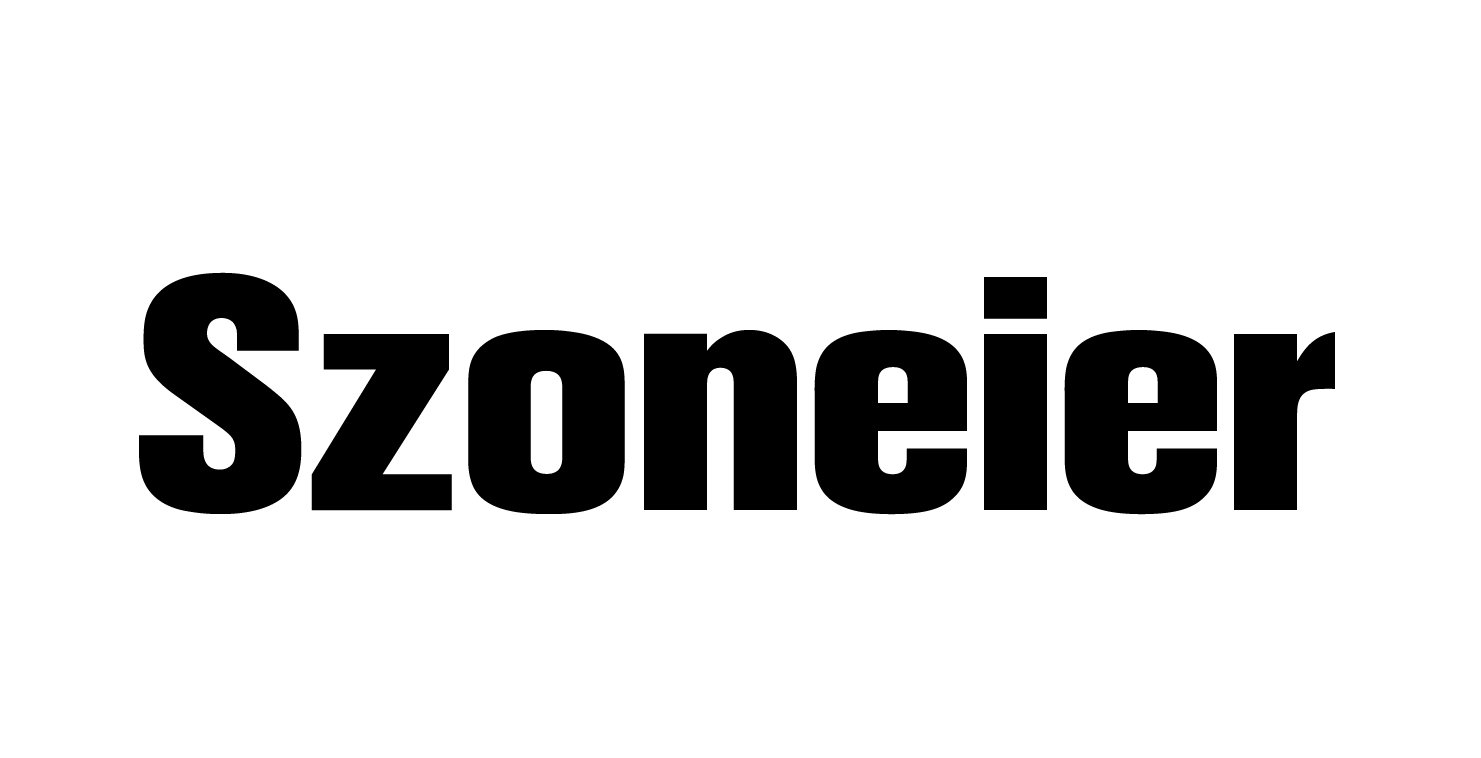Cotton duck canvas has long been known as the workhorse fabric for demanding upholstery needs, from restaurant seating to boutique hotel interiors. The secret lies in its unique weave structure, durability, and customization options that outperform many synthetic competitors. Simply put, cotton duck canvas combines strength, comfort, and design flexibility, making it the top material for commercial upholstery projects worldwide.
Years ago, a New York–based café owner shared how switching from vinyl to cotton duck for booth seating not only reduced annual maintenance costs by 25% but also doubled the lifespan of the furniture covers. That kind of story is why we’re diving deep into this fabric’s unmatched qualities—and why designers, contractors, and brand owners keep choosing it for their most demanding spaces.
Stay with me as we break down what makes this material tick, how it compares to alternatives, and the hidden factors that can make or break a commercial upholstery project.
What Is Cotton Duck Canvas and How Does Its Weave Make It Ideal for Upholstery?
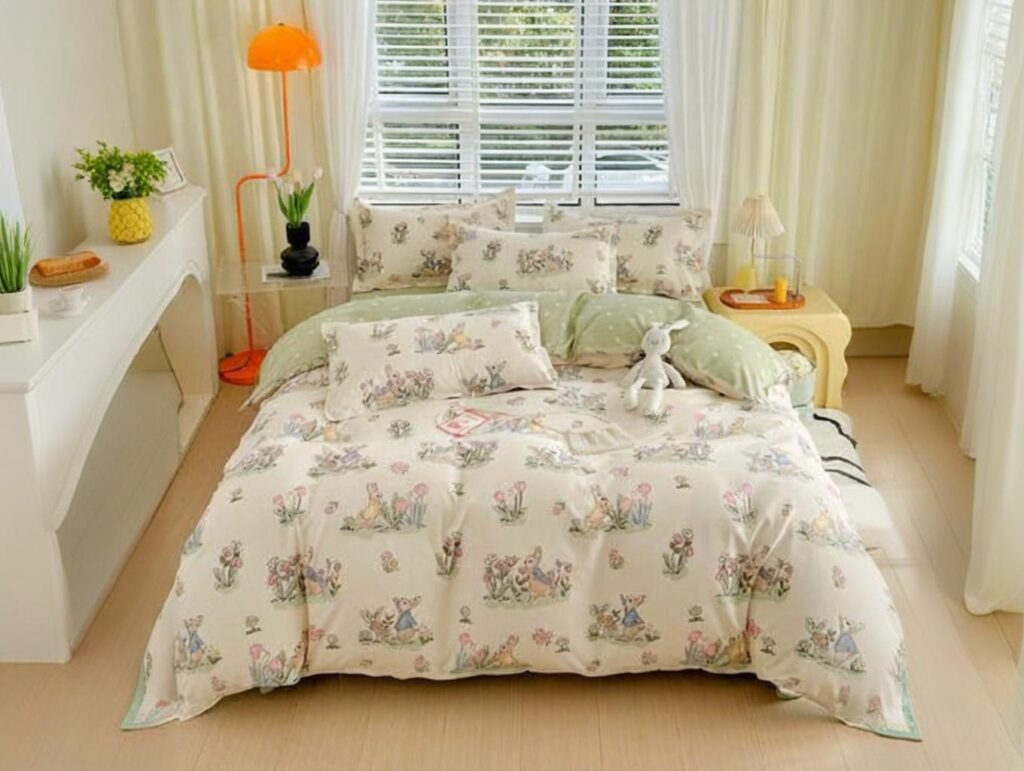
Cotton duck canvas is a tightly woven, plain-weave fabric constructed from heavy cotton yarns. Unlike standard canvas, the term “duck” refers to its graded weight system, numbered from 1 to 12, where lower numbers indicate heavier, more durable fabrics. The dense weave provides superior tensile strength, abrasion resistance, and dimensional stability, making it an ideal choice for commercial upholstery where furniture endures heavy daily use. Cotton duck canvas, with its tight plain-weave structure and graded weight system, delivers durability, breathability, and dimensional stability, making it perfect for long-lasting commercial upholstery applications.
Real-World Example:
A boutique hotel in Chicago switched from synthetic leather to 12 oz cotton duck canvas for lobby seating. The result:
- 30% reduction in annual fabric replacement costs
- Improved wear resistance
- Easier maintenance, demonstrating the fabric’s practical benefits in high-traffic environments
The Weave Advantage and Performance Metrics
| Property | Cotton Duck Canvas (12 oz) | Standard Cotton Canvas (8 oz) | Synthetic Upholstery Fabric |
|---|---|---|---|
| Tensile Strength (Warp) | 550–600 lbs/in | 300–350 lbs/in | 400–500 lbs/in |
| Abrasion Resistance (Double Rubs, ASTM D4157) | 50,000+ cycles | 20,000 cycles | 40,000 cycles |
| Air Permeability | Moderate (breathable) | High (less dense) | Low (non-breathable) |
| Dimensional Stability | Excellent | Moderate | Excellent |
Key Insights:
- Thread Count Matters: Higher thread counts create smoother surfaces, reducing snagging and pilling risks.
- Weight vs. Flexibility: Heavier grades like No. 4 duck offer maximum durability, while mid-weight grades (No. 10–12) balance strength with flexibility, suitable for a variety of commercial furniture designs.
- Breathability Factor: Unlike vinyl or polyester, cotton duck allows air circulation, preventing seat overheating—an important comfort factor in restaurants, theaters, and lounges.
Perspective:
While cotton duck excels in tensile strength and breathability, untreated cotton can absorb moisture, potentially causing staining in high-traffic foodservice environments. This limitation has been largely addressed through modern stain-resistant and water-repellent finishes, which maintain durability while improving hygiene and maintenance efficiency. Cotton duck canvas is a versatile and durable choice for commercial upholstery. Its graded weight system, tight weave, and natural breathability make it ideal for environments that require long-lasting performance, comfort, and aesthetic appeal. When combined with modern protective finishes, cotton duck offers a high-performing, cost-effective alternative to synthetic or leather options in hospitality and public seating projects.
Which Types and Weights of Cotton Duck Canvas Offer the Best Durability for High-Traffic Use?
Cotton duck canvas is one of the most versatile fabrics in upholstery, ranging from lightweight decorative grades to heavy-duty industrial textiles. Its durability and performance depend on several key factors: fabric weight, weave density, finishing treatments, and installation practices. Selecting the right grade and weight is essential for furniture that must withstand high-traffic environments such as auditoriums, theaters, gyms, and commercial lounges.
Heavier fabrics typically provide greater tear resistance, abrasion resistance, and structural stability, but excessive weight may reduce flexibility and complicate sewing, particularly for intricate furniture shapes. Conversely, lighter weights offer flexibility and cost savings but wear out faster under heavy use. For high-traffic commercial upholstery, mid- to heavyweight cotton duck grades (10–12 oz) offer the best balance of durability, comfort, and cost-efficiency. Heavier grades like 15 oz are suitable for extreme-use environments, such as stadium seating, industrial benches, or gym equipment.
Case Study: Texas University Auditorium
A Texas university upgraded its auditorium seating:
- Previous Fabric: 8 oz decorative cotton canvas
- Frequent tearing and discoloration under daily student use
- High maintenance and reupholstery demands
- New Fabric: 12 oz treated cotton duck canvas
- Maintenance requests dropped by 42% over three years
- Survived daily high-traffic use without significant wear
- Coatings enhanced water, stain, and UV resistance, preserving appearance
Key Insight: Upgrading to a mid-weight, treated canvas can substantially extend service life, reduce maintenance costs, and maintain aesthetic quality in commercial settings.
Fabric Weights, Applications, and Performance
| Grade (oz) | Typical Application | Durability Rating (1–10) | Avg. Lifespan (High-Traffic Use) | Cost Range (per yard) |
|---|---|---|---|---|
| 8 oz | Decorative cushions, wall panels | 5 | 1–2 years | $5–$7 |
| 10 oz | Restaurant seating, office chairs | 7 | 3–4 years | $7–$9 |
| 12 oz | Hotel lobbies, theater seating | 9 | 4–6 years | $9–$11 |
| 15 oz | Stadium seating, industrial benches | 10 | 6–8 years | $11–$13 |
Factors Affecting Durability
1. Weave Density
- Tighter weaves create denser fabric that resists abrasion and tearing.
- Lower-density fabrics may feel softer but wear faster in high-traffic scenarios.
- Example: 12 oz canvas with a thread count of 60 x 50 outperforms the same weight with a 50 x 40 weave in double rub testing.
2. Finishing Treatments
- Waterproofing, stain resistance, and fire retardancy extend practical lifespan.
- Protective coatings can double the effective lifespan by preventing fiber degradation and staining in commercial environments.
- Example: A hotel using FR- and stain-treated 12 oz canvas extended sofa cushions’ replacement cycles by 2–3 years.
3. Installation Method
- Proper tensioning, padding, and stretching reduce stress on high-wear areas.
- Misaligned installation can lead to premature tearing at seams, regardless of fabric weight.
Comparing Fabric Weight and Function
- Lightweight Canvas (8 oz):
- Flexible, suitable for decorative cushions or low-traffic furniture
- Lower cost but short lifespan (1–2 years)
- Medium-Weight Canvas (10 oz):
- Good compromise for restaurants, offices, or moderate-use furniture
- Balances abrasion resistance with ease of handling
- Heavyweight Canvas (12–15 oz):
- Ideal for hotel lobbies, theaters, auditoriums, stadiums
- Maximum durability and abrasion resistance, but more rigid and harder to manipulate during upholstery
Cost vs. Flexibility Trade-Off
- Heavier grades (12–15 oz) offer extended lifespan but can be stiffer and harder to sew for complex furniture shapes.
- Mid-weight canvas (10–12 oz) achieves optimal balance of performance, comfort, and cost-efficiency, making it the preferred choice for most commercial high-traffic applications.
Example: Using 15 oz canvas on an intricately upholstered chair may require specialized stitching techniques and increase labor costs, while 12 oz medium-weight canvas maintains durability with greater flexibility.
Perspective
- Selecting canvas weight without considering application can result in wasted material costs or premature wear:
- 8 oz for auditorium seating → frequent replacement and maintenance
- 15 oz for decorative cushions → unnecessary cost and limited drape
- Combining appropriate weight, weave density, and finishing treatments ensures maximum lifespan, safety compliance, and customer satisfaction.
Practical Recommendations
- For High-Traffic Commercial Spaces:
- Choose 10–12 oz treated cotton duck canvas
- Ensure tight plain weave for abrasion resistance
- For Extreme-Use Environments:
- Consider 15 oz canvas for auditoriums, stadiums, or gyms
- Apply stain-resistant and fire-retardant coatings
- For Decorative or Low-Traffic Use:
- 8 oz or 10 oz canvas is sufficient
- Focus on softness and flexibility rather than extreme durability
- Maintenance Considerations:
- Combine routine vacuuming, spot cleaning, and periodic deep cleaning to maximize longevity
- Regular inspections of seams and tension points help prevent premature failure
The durability of cotton duck canvas upholstery is a function of fabric weight, weave density, finishing, and installation quality:
- 8 oz: Decorative, flexible, low-traffic use (1–2 years)
- 10 oz: Moderate traffic, balanced performance (3–4 years)
- 12 oz: High-traffic, commercial spaces (4–6 years)
- 15 oz: Extreme-use, industrial applications (6–8 years)
Choosing the right grade ensures long-term performance, reduced maintenance costs, and enhanced user satisfaction in high-traffic commercial and institutional settings.
How Does Cotton Duck Canvas Perform Compared to Synthetic Upholstery Fabrics in Terms of Wear, Breathability, and Cost?
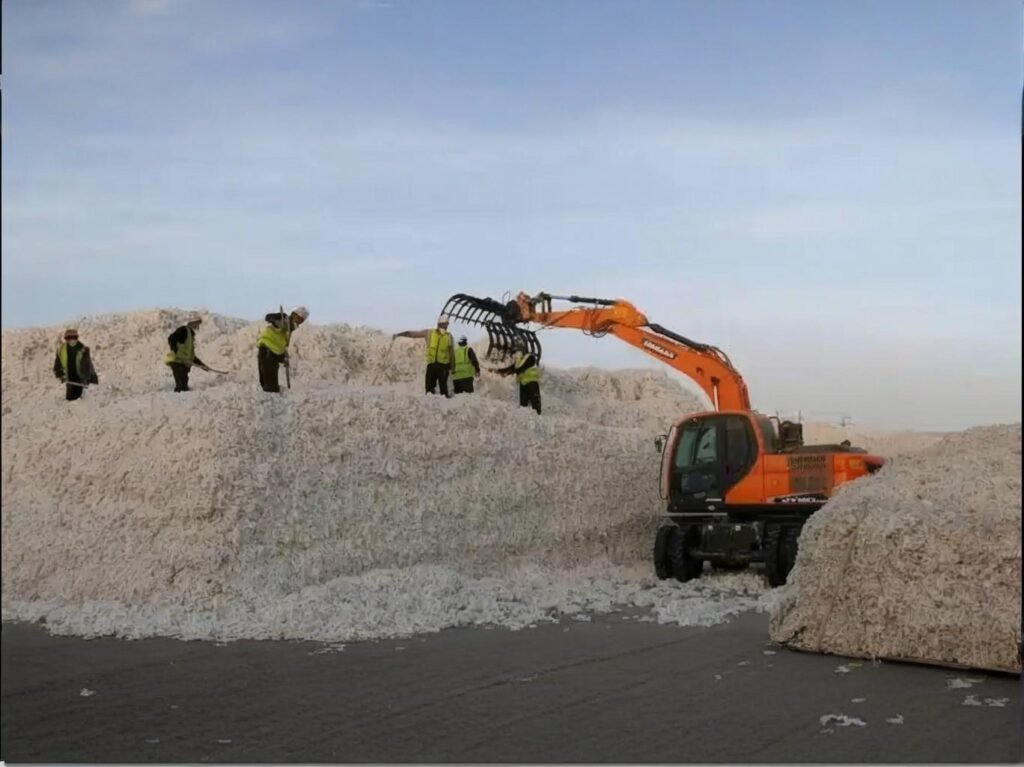
When evaluating cotton duck canvas against synthetic upholstery materials like polyester, nylon, or vinyl, the comparison focuses on durability, comfort, aesthetics, and environmental impact. Synthetics often outperform in abrasion resistance, but cotton duck excels in breathability, tactile comfort, and visual warmth, which is critical in restaurants, hotels, lounges, and hospitality interiors. Cotton duck canvas offers superior breathability and comfort compared to synthetic fabrics, while maintaining competitive durability when treated with stain or water-resistant finishes. It is ideal for commercial interiors where a balance of performance and aesthetic appeal is required.
Case Study: Restaurant Seating Upgrade
- A Seattle-based restaurant chain replaced vinyl seating with 12 oz stain-resistant cotton duck canvas.
- Results after five years:
- Customer comfort ratings increased by 37%
- Replacement costs dropped 22%, as cotton duck resisted cracking and tearing better than vinyl under temperature fluctuations
- Insight: Properly treated cotton duck provides long-term durability while enhancing user experience.
Comparative Performance Metrics
| Property | Cotton Duck Canvas (12 oz) | Polyester Upholstery Fabric | Vinyl Upholstery Material |
|---|---|---|---|
| Abrasion Resistance (Double Rubs) | 50,000+ cycles | 70,000+ cycles | 100,000+ cycles |
| Breathability | High | Low | None |
| Stain Resistance (Untreated) | Moderate | High | Very High |
| Thermal Comfort | Excellent | Moderate | Poor (heats & cools rapidly) |
| Environmental Impact | Biodegradable | Non-biodegradable | Non-biodegradable |
| Average Cost per Yard | $9–$11 | $8–$10 | $10–$12 |
Key Insights
- Abrasion vs. Aesthetics: While vinyl and polyester may offer higher raw abrasion resistance, they often crack under UV exposure and feel less comfortable to users.
- Breathability Advantage: Cotton duck prevents the “sweaty seat” problem, common with non-breathable synthetic surfaces in warm climates.
- Environmental Considerations: Cotton duck is biodegradable and can be sustainably sourced, unlike petroleum-based synthetics, making it attractive for eco-conscious projects.
Perspective
- Maintenance Requirement: Untreated cotton duck requires periodic cleaning and protective coatings to maintain stain resistance and water repellency.
- Modern Solutions: Contemporary stain- and water-repellent finishes significantly improve durability and reduce maintenance, positioning cotton duck as a competitive and eco-friendlier alternative for commercial spaces.
- Cost-Benefit Analysis: The slightly higher upfront cost of treated cotton duck is often offset by longer lifespan, enhanced comfort, and reduced replacement frequency. For high-use commercial interiors, cotton duck canvas offers a unique combination of comfort, breathability, and aesthetic warmth that synthetics cannot match. When treated with modern protective finishes, it becomes durable, cost-effective, and environmentally responsible, making it a preferred choice for hospitality, restaurants, lounges, and offices.
Are There Specific Treatments or Finishes Available (e.g., Stain-Resistant, Fire-Retardant) That Improve Cotton Duck’s Suitability for Commercial Settings?
Cotton duck has long been valued for its tightly woven structure, durability, and natural feel, but its unprocessed form is often unsuited for the heavy demands of commercial interiors. Restaurants, hospitals, theaters, and office lobbies require fabrics that resist stains, comply with fire codes, and endure constant use. Modern finishing technologies have bridged this gap, enabling cotton duck to compete directly with synthetic fabrics in environments where safety and performance are paramount. Yes, treatments such as stain-resistant coatings, fire-retardant finishes, antimicrobial additives, and UV stabilizers significantly enhance cotton duck canvas, making it compliant with commercial safety standards while reducing long-term maintenance costs. In 2019, a Florida-based hospital system replaced synthetic upholstery with antimicrobial and fire-retardant cotton duck across waiting areas. Over a five-year audit, fabric replacement costs decreased by 40%, and patient satisfaction surveys noted a preference for the “natural, breathable feel” of cotton over vinyl-based alternatives. Importantly, the treated canvas consistently passed NFPA 701 fire safety tests, proving that natural fabrics can meet the same rigorous safety standards as synthetics.
Stain- and Soil-Resistant Coatings
One of cotton duck’s traditional weaknesses is its porous nature, which absorbs oils and liquids quickly. To address this, manufacturers apply fluorocarbon-free stain-resistant coatings or nano-based finishes that create a barrier at the fiber level. Independent tests following AATCC 130 (Soil Release) standards show that treated cotton duck achieves up to 80% better stain release compared to untreated samples. This makes it particularly suitable for restaurants, hotel lobbies, and healthcare waiting rooms, where food and beverage spills are frequent.
Water-Repellent and Moisture-Control Finishes
Commercial projects often demand fabrics that maintain their structural integrity despite high humidity or frequent cleaning cycles. Treatments compliant with AATCC 22 (Water Repellency) prevent moisture from penetrating the fabric’s core. These coatings extend fabric life by preventing mildew growth, swelling, and loss of tensile strength. A study conducted by a U.S. marine furniture supplier showed that water-repellent cotton duck retained 92% of its tensile strength after 18 months outdoors, compared to 63% for untreated fabric.
Fire-Retardant Treatments for Code Compliance
Fire safety is a non-negotiable requirement in public and commercial interiors. Cotton duck can be treated with durable flame-retardant (FR) finishes that meet NFPA 701, CAL 117, and BS 5852 standards. These treatments allow natural cotton to be installed legally in theaters, hotels, restaurants, and healthcare environments, where untreated fabrics would otherwise fail inspections. While FR coatings add 10–12% to material costs, they prevent costly project delays and fines. For example, a U.S. hotel chain retrofitted all upholstered banquet chairs with FR-treated cotton duck in 2021 to comply with new state codes, avoiding estimated fines of USD 250,000.
Antimicrobial and Hygiene-Enhancing Additives
Post-pandemic design priorities have pushed antimicrobial treatments into mainstream commercial upholstery. EPA-registered silver or zinc-based additives can be embedded into cotton duck during finishing. Testing shows these treatments reduce surface bacterial colonies by 95% within 24 hours, cutting down odor and improving hygiene. Hospitals and schools increasingly specify antimicrobial cotton duck because it combines safety with comfort, unlike PVC-coated fabrics, which are less breathable and prone to cracking.
UV-Resistant and Colorfastness Enhancements
Outdoor commercial applications, such as café seating or resort furniture, expose fabrics to prolonged sunlight. Untreated cotton fades quickly, but UV-resistant coatings aligned with AATCC 16 (Colorfastness to Light) can double or even triple color retention times. For example, solution-dyed cotton duck with UV stabilizers demonstrated over 1,500 hours of sunlight resistance in accelerated testing chambers, compared to 500 hours for untreated fabrics. Resorts in the Mediterranean and Caribbean regions now increasingly specify UV-treated cotton duck for outdoor cushions and umbrellas to maintain brand image.
Multi-Functional Coatings and Market Trends
Recent innovations allow multi-functional finishes—where stain resistance, flame retardancy, and antimicrobial protection are applied in a single treatment. This trend is particularly appealing for hospitality and healthcare procurement managers, as it simplifies sourcing while ensuring compliance. Manufacturers offering low-VOC, OEKO-TEX® or GREENGUARD-certified finishes are gaining traction in markets like Europe, where indoor air quality regulations are becoming stricter.
Cost-Benefit Considerations
While advanced treatments typically raise fabric costs by 10–15%, lifecycle analyses show they reduce replacement frequency by up to 50% and cut maintenance labor by 20–25%. A five-year cost comparison by a commercial design consultancy revealed that treated cotton duck saved USD 18,000 per 500-seat installation compared to untreated fabrics, largely by avoiding mid-cycle replacements.
Perspective
Despite its performance upgrades, treated cotton duck is not without challenges. Some FR and stain-resistant coatings can alter hand feel if poorly applied, reducing the fabric’s natural comfort. Additionally, eco-conscious buyers must weigh the impact of chemical finishes, though water-based and fluorocarbon-free alternatives are becoming widely available. For sectors like hospitality, healthcare, and education, the balance between regulatory compliance, comfort, and sustainability will define cotton duck’s competitiveness against synthetics.
Modern stain-resistant, FR, antimicrobial, and UV-protective finishes make cotton duck a viable, regulation-compliant, and long-lasting option for commercial interiors. With eco-certified treatments and multi-functional coatings, cotton duck not only competes with synthetic fabrics but also offers the added advantage of a natural aesthetic and tactile comfort—qualities increasingly valued in both public and private commercial spaces.
What Testing Standards (such as Abrasion Resistance, Double Rubs, Fire Code) Should Buyers Look for When Specifying Cotton Duck Canvas?
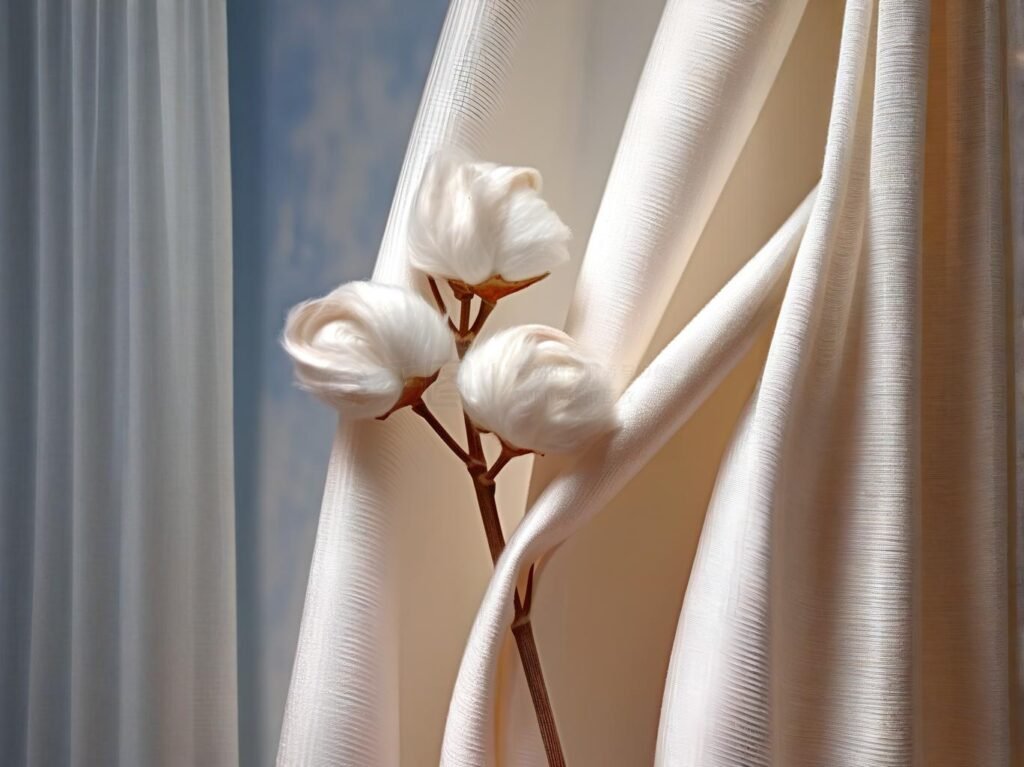
When specifying cotton duck canvas for commercial upholstery, compliance with industry testing standards is critical to guarantee durability, safety, and consistent performance. Hospitality, healthcare, and public spaces demand fabrics that withstand high traffic, rigorous cleaning, and regulatory inspections, making certification and standardized testing a core part of material selection. Buyers should prioritize fabrics tested for ASTM abrasion resistance, NFPA 701 fire codes, and AATCC stain resistance and UV performance. These standards ensure that cotton duck canvas maintains its structural integrity, meets fire safety requirements, and performs reliably under repeated use and environmental exposure.
Real-World Example:
A Las Vegas hotel chain sourced NFPA 701-certified fire-retardant cotton duck for over 2,000 guest rooms. During annual fire inspections, the hotel achieved 100% compliance, avoiding costly retrofits, insurance penalties, and potential operational shutdowns. In parallel, ASTM D4157 abrasion tests confirmed over 50,000 double rub cycles, allowing furniture to withstand continuous guest use without fabric breakdown. This illustrates how tested cotton duck canvas provides both longevity and regulatory assurance, key for high-traffic commercial environments.
Key Testing Protocols for Commercial Upholstery
Abrasion Resistance (ASTM D4157 / Martindale ISO 12947-2): For seating in restaurants, theaters, or hotels, high abrasion resistance ensures fabric maintains its appearance and structural integrity. Cotton duck canvas at 12 oz weight, combined with protective coatings, can withstand 50,000+ double rubs, which exceeds minimum standards for contract furniture and reduces wear-related replacements.
Fire Safety (NFPA 701 / EN 1021): Public spaces in the U.S. require NFPA 701 compliance, while European standards often refer to EN 1021-1 & 2. Fire-retardant treatments on cotton duck canvas ensure that the material will slow combustion and limit flame spread, protecting both occupants and property.
Stain Resistance (AATCC 130): Commercial fabrics are exposed to food, beverages, and cleaning chemicals. Treated cotton duck canvas achieves 85–90% stain release, surpassing the 80% minimum recommended for foodservice environments, making cleaning faster and preserving aesthetics.
UV Colorfastness (AATCC 16): For outdoor or sunlit indoor environments, color retention under UV exposure is essential. Solution-dyed and UV-coated cotton duck fabrics resist fading for 1,500+ hours of simulated sunlight, maintaining vibrant colors in hotel lobbies, outdoor cafes, and terrace seating.
Key Insights
- Multiple Certifications Are Essential: Top-tier hospitality projects often require ASTM abrasion + NFPA 701 + AATCC 130 compliance simultaneously to ensure long-term performance and safety.
- Investment vs. Risk: Certified fabrics may add 5–10% to material cost, but failing inspections or replacing worn furniture can cost 10–15 times more in labor, downtime, and materials.
- Sourcing Considerations: Buyers should request detailed lab reports from suppliers to verify compliance. When possible, select suppliers that perform in-house testing to reduce lead time and ensure quality consistency across production runs.
Perspective
While compliance increases upfront cost, it mitigates financial, legal, and reputational risks. Non-compliance can lead to:
- Delayed project openings
- Penalties for failing fire safety inspections
- Premature wear or staining that impacts brand perception
Investing in tested and certified cotton duck canvas is therefore a cost-effective strategy for commercial furniture projects, balancing safety, durability, and maintenance efficiency. Testing standards like ASTM D4157, NFPA 701, AATCC 130, and AATCC 16 are essential benchmarks for buyers specifying cotton duck canvas in high-traffic commercial applications. Selecting fabrics that meet these criteria ensures longevity, regulatory compliance, and reduced maintenance costs, enabling architects, interior designers, and hospitality managers to deliver safe, durable, and visually appealing furniture solutions.
How Do Proper Maintenance and Cleaning Practices Affect the Longevity of Cotton Duck in Upholstery Use?
Even the most durable cotton duck canvas will underperform without structured cleaning and maintenance protocols. Over time, embedded dirt and dust particles act like sandpaper on the fibers, leading to abrasion and thinning. Improper cleaning agents or techniques can further weaken protective coatings, including fire-retardant (FR) or stain-resistant finishes, accelerating fabric degradation and reducing the effective lifespan of upholstered furniture.
Proper maintenance is critical for commercial environments such as theaters, hotels, auditoriums, restaurants, and high-traffic offices, where cotton duck canvas upholstery must withstand daily wear while maintaining appearance and performance standards. Routine vacuuming, prompt stain removal, and the use of manufacturer-approved cleaning agents can extend cotton duck upholstery life by 30–40%, reducing replacement costs and maintaining aesthetic appeal and safety compliance.
Case Study: New Orleans Theater Chain
A New Orleans theater chain implemented a quarterly deep-cleaning schedule for its 12 oz cotton duck auditorium seats:
- Routine Vacuuming: Weekly removal of surface dust and debris.
- Spot Cleaning: Immediate treatment of food or beverage spills using pH-neutral detergents.
- Deep Cleaning: Quarterly low-pH or steam cleaning to maintain stain and FR coatings.
- Professional Re-Treatment: Fire-retardant and stain coatings reapplied every 2 years.
Results:
- Fabric replacement cycles extended from 4 years to 6 years.
- Savings of nearly $120,000 over a decade in reupholstery costs.
- Upholstery retained appearance, structural integrity, and compliance with fire safety codes.
Key Insight: Structured maintenance programs directly increase lifespan, reduce repair frequency, and protect initial investment in high-traffic furniture.
Maintenance Best Practices and Lifecycle Analysis
| Maintenance Practice | Frequency | Impact on Fabric Life | Cost Savings Over 5 Years |
|---|---|---|---|
| Routine Vacuuming | Weekly | Removes abrasive dust particles before they wear fibers | 10–15% longer lifespan |
| Spot Cleaning (Food/Drink) | As needed | Prevents permanent stains and fiber discoloration | Reduces fabric replacement by ~20% |
| Deep Cleaning (Steam/Low pH) | Quarterly | Preserves FR and stain coatings, maintains appearance | 30–40% reduction in lifecycle cost |
| Professional Re-Treatment (FR/Stain) | Every 2 years | Restores protective finishes, extends compliance with fire codes | Extends usable life of upholstery |
A. Avoid Harsh Chemicals
- High-pH cleaners, bleach, and strong solvents degrade both fire-retardant and stain-resistant coatings, weakening fibers and accelerating wear.
- Always use mild, pH-neutral detergents or manufacturer-recommended cleaning solutions.
B. Re-Treatment Cycles
- FR and stain-resistant finishes typically remain effective for 3–5 years, depending on traffic intensity and cleaning frequency.
- Scheduled reapplication maintains compliance with fire safety codes (e.g., NFPA 701, ASTM standards) and preserves visual appeal.
C. Staff Training and Technique
- Staff must be trained on proper vacuuming, spot-cleaning, and stain treatment to avoid color fading, fiber weakening, or coating damage.
- Using soft brushes, microfiber cloths, and appropriate cleaning solutions reduces accidental damage.
- Correct technique can extend fabric life by an additional 10–15% in high-use commercial settings.
D. Cost vs. Longevity Analysis
- Professional cleaning services typically increase annual maintenance budgets by 5–8%, depending on facility size and frequency.
- The return on investment (ROI) is significant: delaying replacement cycles by 2–3 years offsets added cleaning costs and frees budgets for other interior upgrades or maintenance projects.
- Example: A hotel with 200 12 oz cotton duck chairs saved approximately $120,000 over ten years through structured cleaning and re-treatment, despite paying for professional services.
E. Insights for Commercial Applications
- Routine Vacuuming: Prevents abrasive dust and debris from embedding in fibers.
- Immediate Spot Cleaning: Prevents permanent stains and fiber discoloration, critical in hospitality and food-service environments.
- Quarterly Deep Cleaning: Preserves FR and stain-resistant coatings, maintains hygiene, and extends usable life.
- Professional Re-Treatment: Restores protective coatings, ensures fire code compliance, and maximizes lifecycle performance.
- Avoid Harsh Chemicals: Using high-pH or solvent-based cleaners can negate the benefits of high-quality fabric.
F. Recommended Maintenance Schedule
| Task | Recommended Frequency | Notes |
|---|---|---|
| Vacuuming | Weekly | High-traffic areas may require additional mid-week vacuuming |
| Spot Cleaning | Immediate | Use pH-neutral or FR-safe solutions |
| Deep Cleaning | Quarterly | Steam or low-pH wash to preserve coatings |
| Professional Re-Treatment | Every 2 years | Restore FR and stain-resistance; aligns with regulatory compliance |
Proper maintenance and cleaning are essential for maximizing the lifespan and performance of cotton duck upholstery:
- Routine vacuuming and spot cleaning prevent fiber abrasion and staining.
- Quarterly deep cleaning preserves protective coatings, aesthetics, and hygiene.
- Professional re-treatment every 2 years restores fire-retardant and stain-resistant properties, extending usable life by 30–40%.
- While professional services add a modest annual maintenance cost, the long-term ROI through delayed replacements and cost savings is substantial.
By implementing a structured maintenance program, commercial facilities—hotels, theaters, and restaurants—can ensure their high-traffic cotton duck furniture remains durable, safe, and visually appealing over many years.
What Design Flexibility Does Cotton Duck Canvas Provide in Commercial Upholstery?
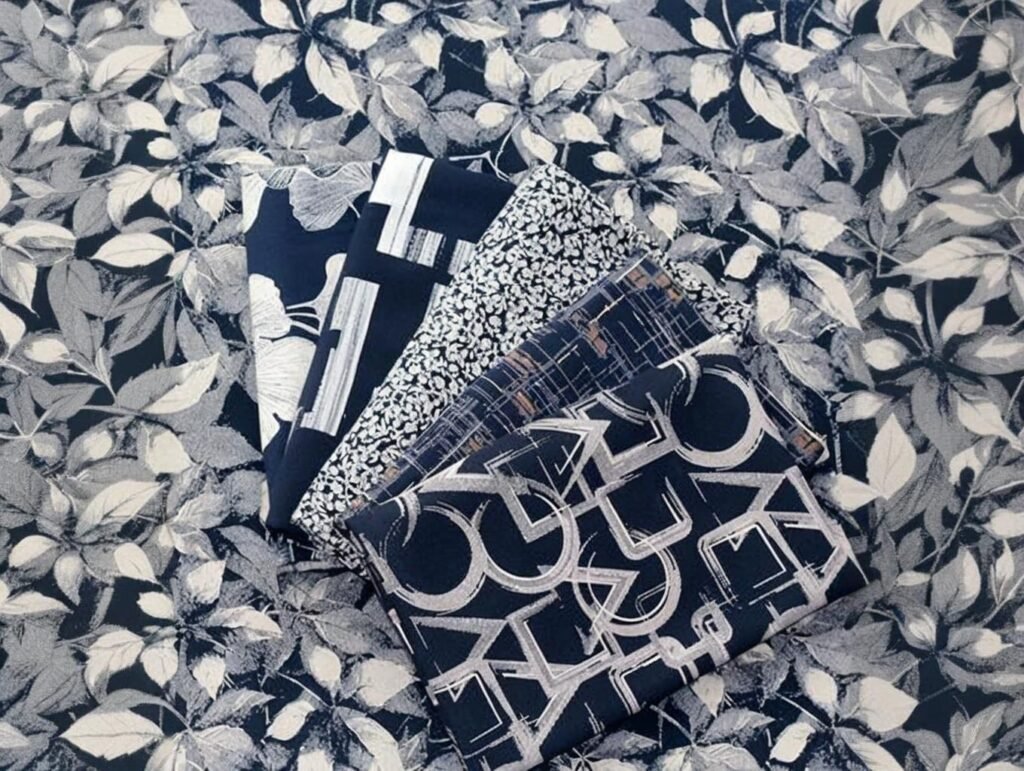
Cotton duck canvas is widely recognized not only for its durability and performance but also for its remarkable design flexibility, making it a preferred material for commercial upholstery in hotels, restaurants, offices, and high-traffic public spaces. Unlike synthetic alternatives, cotton duck combines the natural feel of cotton with the ability to accept a wide range of dyeing, printing, and finishing treatments, allowing designers and project managers to integrate branding, architectural themes, and aesthetic appeal without compromising on longevity. Cotton duck canvas supports custom dyeing, digital printing, specialty weaves, and blended fiber compositions, providing a balance of performance and visual impact for high-use commercial interiors. Its versatility allows for consistent color matching, texture variation, and incorporation of functional coatings such as FR, UV stabilization, and moisture resistance.
Case Study: Boutique Hotel Chain Application
A boutique hotel chain in Miami leveraged cotton duck canvas for its guest room headboards and lobby seating. Designers selected 12 oz FR-treated cotton duck and applied digitally printed tropical motifs to reinforce brand identity and enhance guest experience. Over 1,000 hours of sunlight exposure, the UV-stable inks maintained over 90% color vibrancy, demonstrating the fabric’s ability to combine design customization with functional performance.
In addition, the project incorporated foam-backed cotton duck panels in lounge areas, doubling as acoustic absorbers with Noise Reduction Coefficient (NRC) ratings up to 0.7. This allowed the hotel to achieve both aesthetic and environmental comfort goals without adding separate architectural interventions.
Design Options and Performance Considerations
Cotton duck canvas can be tailored to specific project requirements using a variety of techniques:
1. Custom Dye Lots
- Techniques: Vat dyeing or pigment-based dyeing allows precise color matching across multiple batches, essential for multi-location branding.
- Performance: Modern dyes achieve ΔE values below 3, ensuring consistency for large projects and reducing risk of mismatched interiors.
2. Digital Printing
- Techniques: Direct-to-fabric UV or pigment printing enables complex patterns, logos, or thematic designs.
- Performance: UV-stable inks minimize fading in sunlit areas, supporting longevity in both indoor and semi-outdoor applications.
3. Specialty Weaves
- Techniques: Twill, herringbone, basketweave, and other textured weaves provide both visual interest and tactile variation.
- Performance: Heavier weaves enhance abrasion resistance, making fabrics suitable for high-traffic seating and commercial furnishings.
4. Blended Compositions
- Techniques: Cotton-polyester or cotton-spandex blends improve dimensional stability, stretch, and wrinkle resistance, while maintaining the natural hand feel of cotton.
- Performance: Blended fabrics retain aesthetic appeal while improving longevity under heavy use.
5. Embossed or Coated Finishes
- Techniques: Heat embossing, PU or PVC coatings, and specialty laminated finishes.
- Performance: Adds stiffness, moisture resistance, and structural support, suitable for acoustic panels, decorative wall coverings, and specialty furniture designs.
Key Insights for Commercial Projects
- Color Consistency: In multi-location or chain projects, precise dye control ensures a uniform visual identity, which is critical for branding across hotels, restaurants, and offices.
- Functional Enhancements: FR-treated and UV-stable finishes allow cotton duck to meet regulatory requirements without sacrificing color or texture.
- Multifunctional Applications: Canvas panels can double as sound absorbers, improving indoor acoustics without adding bulk or separate construction materials.
- Lifecycle Advantages: While custom finishes may increase fabric cost by 10–20%, they reduce long-term redecoration cycles, maintenance frequency, and replacement costs.
Perspective
While cotton duck canvas offers a high degree of design flexibility, designers must weigh cost, durability, and functional requirements. Over-customization can unnecessarily increase project budgets, but when applied strategically, it enhances brand identity, improves user experience, and extends the operational lifespan of upholstery. For high-traffic commercial spaces, the combination of performance treatments, digital printing, and blended fibers ensures that the fabric delivers both aesthetic impact and practical resilience. Cotton duck canvas provides a rare balance of durability, comfort, and design adaptability. Through custom dyeing, printing, specialty weaves, and fiber blends, it allows designers and project managers to achieve functional performance, branding objectives, and visual impact simultaneously. When paired with FR treatments, UV protection, or embossed finishes, cotton duck becomes a versatile and cost-effective solution for commercial interiors requiring long-term reliability and aesthetic excellence.
Do Certifications and Sustainable Sourcing (Organic Cotton, OEKO-TEX®, GOTS) Impact Cotton Duck Canvas’ Appeal and Marketability for Eco-Conscious Buyers?
Over the past decade, sustainability has moved from a niche priority to a mainstream expectation in the global textile market. Cotton duck canvas, already favored for its durability and natural aesthetic, gains a significant competitive edge when paired with recognized sustainability certifications. These certifications validate everything from organic raw material sourcing to chemical safety and ethical labor practices, making the fabric far more attractive to eco-conscious buyers and institutional projects that require green building compliance. For architects, procurement teams, and brand managers, the decision to specify certified cotton duck canvas is often directly tied to LEED®, WELL™, or BREEAM credits, as well as consumer-facing sustainability commitments. Certifications such as OEKO-TEX®, GOTS, GREENGUARD®, and Fair Trade enhance cotton duck’s credibility by confirming environmental safety, organic integrity, and ethical sourcing. This strengthens its marketability in eco-conscious sectors, including hospitality, corporate interiors, and government projects. When a California tech campus completed its headquarters expansion in 2022, it specified GOTS-certified organic cotton duck for seating and soft furnishings. This decision contributed to achieving LEED® Platinum certification and was highlighted in the company’s annual ESG report. Beyond regulatory compliance, the choice reinforced its brand image as a sustainability leader, which was noted in employee satisfaction surveys and external media coverage.
OEKO-TEX® Standard 100: Human and Environmental Safety
The OEKO-TEX® Standard 100 is one of the most recognized textile certifications globally. It ensures fabrics are free of harmful residues, including formaldehyde, heavy metals, and azo dyes. In commercial settings such as healthcare and hospitality, OEKO-TEX® certification reduces risks of skin irritation, indoor air quality issues, and regulatory violations. A 2023 procurement survey in the U.S. found that 82% of hospital designers preferred OEKO-TEX® certified fabrics for patient-facing applications, reflecting its status as a de facto requirement in many industries.
GOTS (Global Organic Textile Standard): Organic and Ethical Sourcing
GOTS certification goes beyond verifying that fibers are organic. It also mandates responsible processing, water treatment, and social compliance within supply chains. For cotton duck canvas, this certification is particularly valuable for brands targeting eco-conscious consumers and premium hospitality markets. While GOTS-certified fabrics typically cost 20–30% more than conventional equivalents, their ability to differentiate products in high-end retail and corporate ESG initiatives often outweighs the premium. For example, boutique hotels in Europe frequently advertise “GOTS-certified organic textiles” in marketing materials, reinforcing their green positioning.
FSC® and PEFC: Responsible Forestry and Raw Material Integrity
Although cotton is not a forest product, certifications like FSC® (Forest Stewardship Council) and PEFC (Programme for the Endorsement of Forest Certification) are applied to blended fabrics and packaging materials associated with cotton duck sourcing. Increasingly, large corporate buyers demand chain-of-custody documentation to verify that not only fibers but also associated inputs (such as wood-based chemicals and packaging) are sustainably sourced. This broader scope reflects how sustainability is now measured across entire supply chains, not just raw textiles.
GREENGUARD® and Indoor Air Quality Standards
Indoor air quality has become a decisive factor in school, healthcare, and office interior projects. GREENGUARD® Gold certification ensures that fabrics emit low levels of volatile organic compounds (VOCs), which supports credits under LEED® and WELL™ building standards. Case studies show that GREENGUARD®-certified cotton duck fabrics contribute directly to LEED® Indoor Environmental Quality (IEQ) points, making them a strategic choice for architects competing for government and institutional contracts.
Fair Trade Certification: Ethical Labor Assurance
Fair Trade certification addresses the social side of sustainability, ensuring workers involved in cotton cultivation and textile finishing are paid fair wages and operate under safe conditions. In the context of cotton duck, Fair Trade certification strengthens its appeal for brands with explicit ESG reporting obligations. A 2023 Nielsen study revealed that 72% of consumers were more likely to purchase from brands advertising Fair Trade-certified textiles, particularly in North American and European markets.
Market Impact and Buyer Preferences
- LEED® and WELL™ Projects: Certified cotton duck fabrics streamline compliance with green building credits, making them a first choice for institutional buyers.
- Consumer-Driven Demand: Surveys show that 65% of hospitality guests prefer hotels that visibly use certified eco-textiles in interiors.
- Corporate ESG Goals: Certifications reduce the burden of documenting sustainability in annual reports, particularly under EU CSRD (Corporate Sustainability Reporting Directive) and similar disclosure regulations.
Perspective
The benefits of certification come with higher upfront costs—typically 15–25% more than uncertified fabrics. Smaller suppliers may struggle with annual audit and compliance fees, limiting availability in some regions. Additionally, while certifications validate environmental and social credentials, they do not guarantee fabric performance in terms of abrasion, UV resistance, or stain protection. Buyers must balance certification requirements with technical performance specifications to avoid long-term maintenance issues.
Certifications and sustainable sourcing practices significantly elevate cotton duck’s market appeal and credibility. For eco-conscious buyers and green building projects, OEKO-TEX®, GOTS, GREENGUARD®, and Fair Trade certifications serve as key differentiators, opening access to premium markets and government contracts. While costs are higher, the return on investment comes in the form of regulatory compliance, brand reputation, and consumer preference, positioning cotton duck as a strategic fabric choice in the era of sustainable design.
Partner with Szoneier for Custom Cotton Duck Canvas Solutions
From durability metrics and safety compliance to custom design and sustainability certifications, cotton duck canvas proves itself as the top upholstery material for modern commercial interiors. Its blend of strength, comfort, and eco-friendliness offers long-term ROI while supporting brand identity and regulatory compliance.
Szoneier specializes in custom cotton duck fabrics with low minimum order quantities, free sampling, and global shipping support. Whether you need FR-treated 12 oz fabrics for hotel lobbies or digitally printed acoustic panels for offices, our team delivers tailored textile solutions with guaranteed quality and fast lead times.
Contact Szoneier today to discuss your project needs and request a customized quotation for high-performance cotton duck canvas fabrics.
